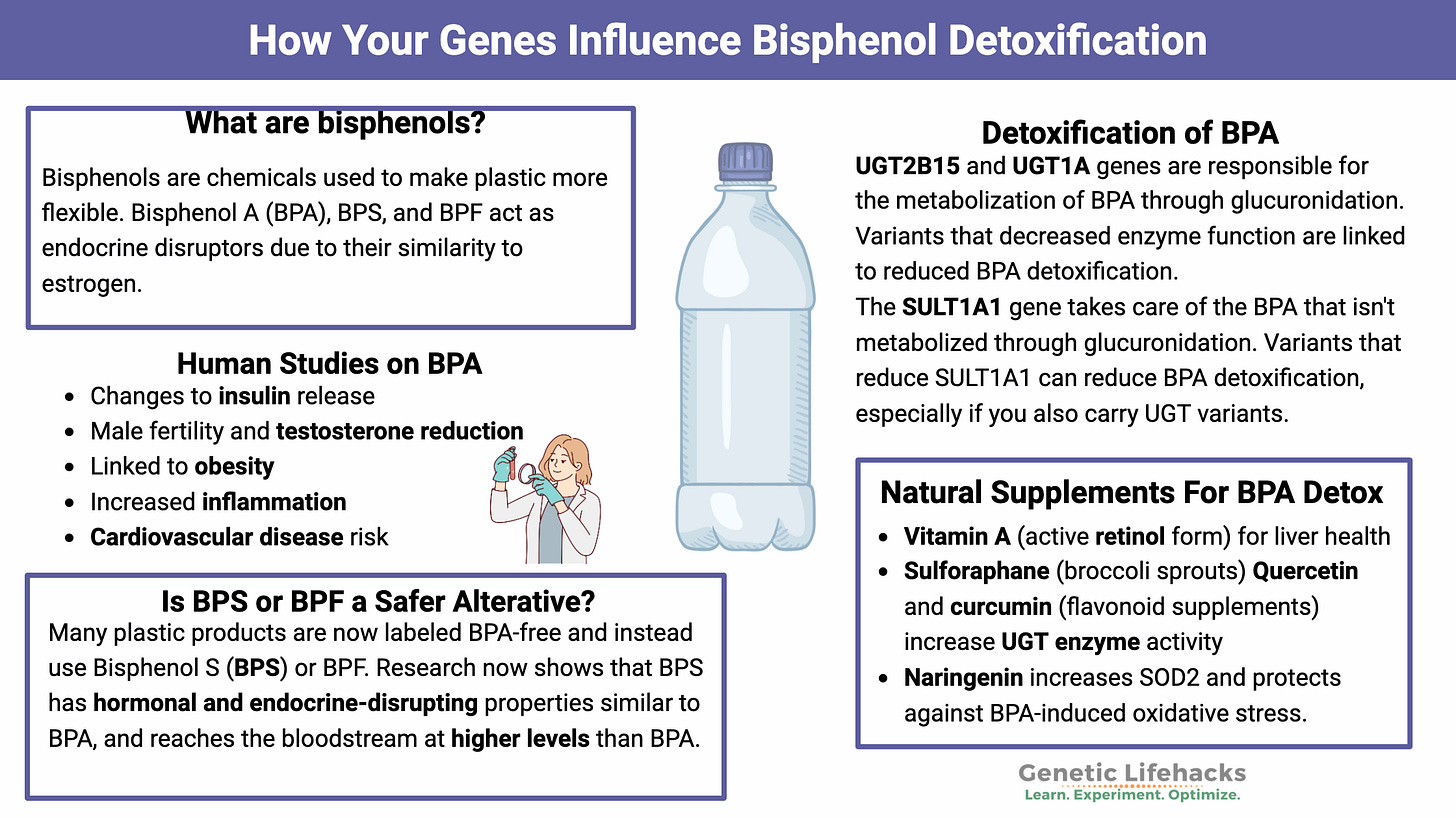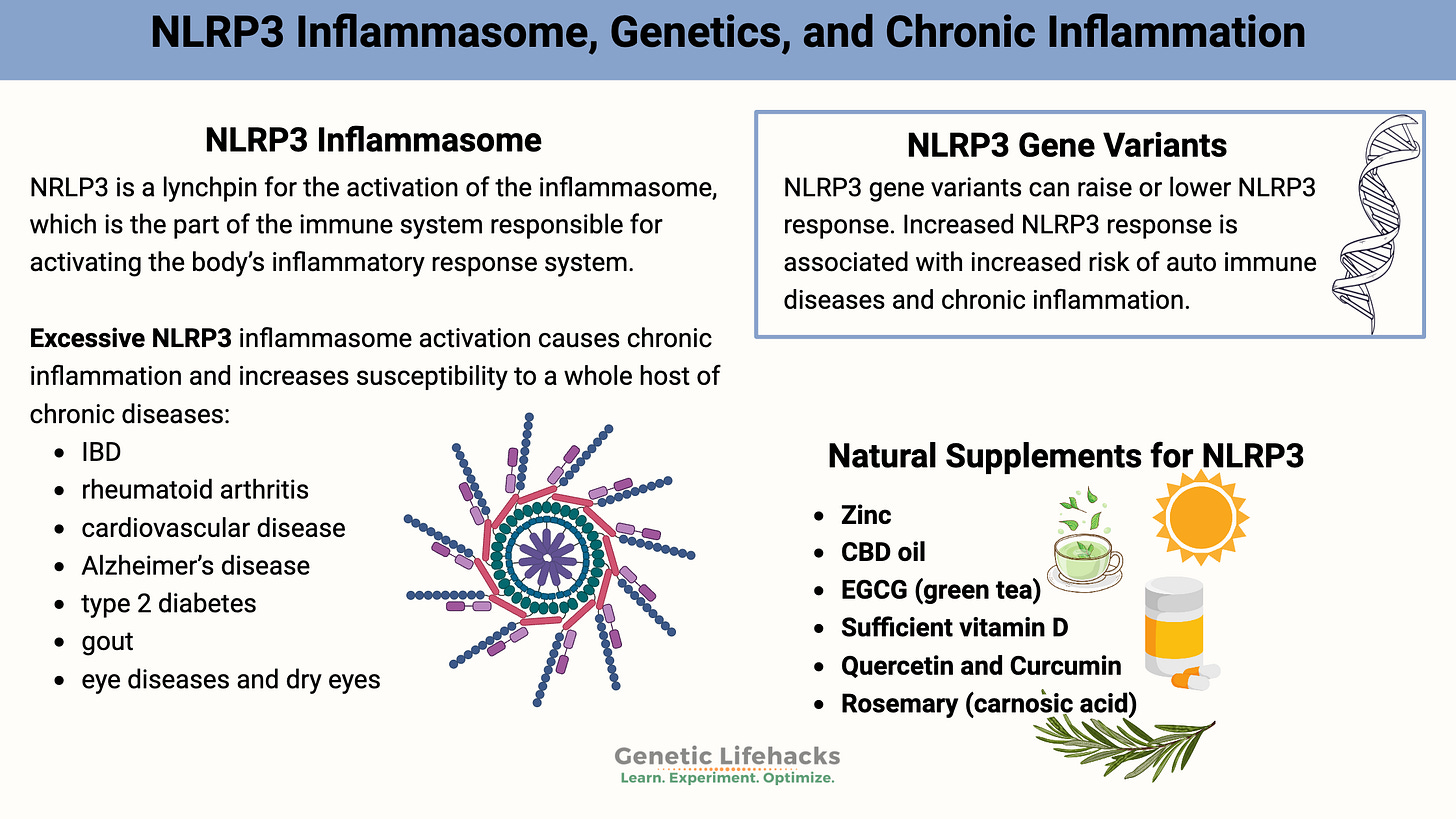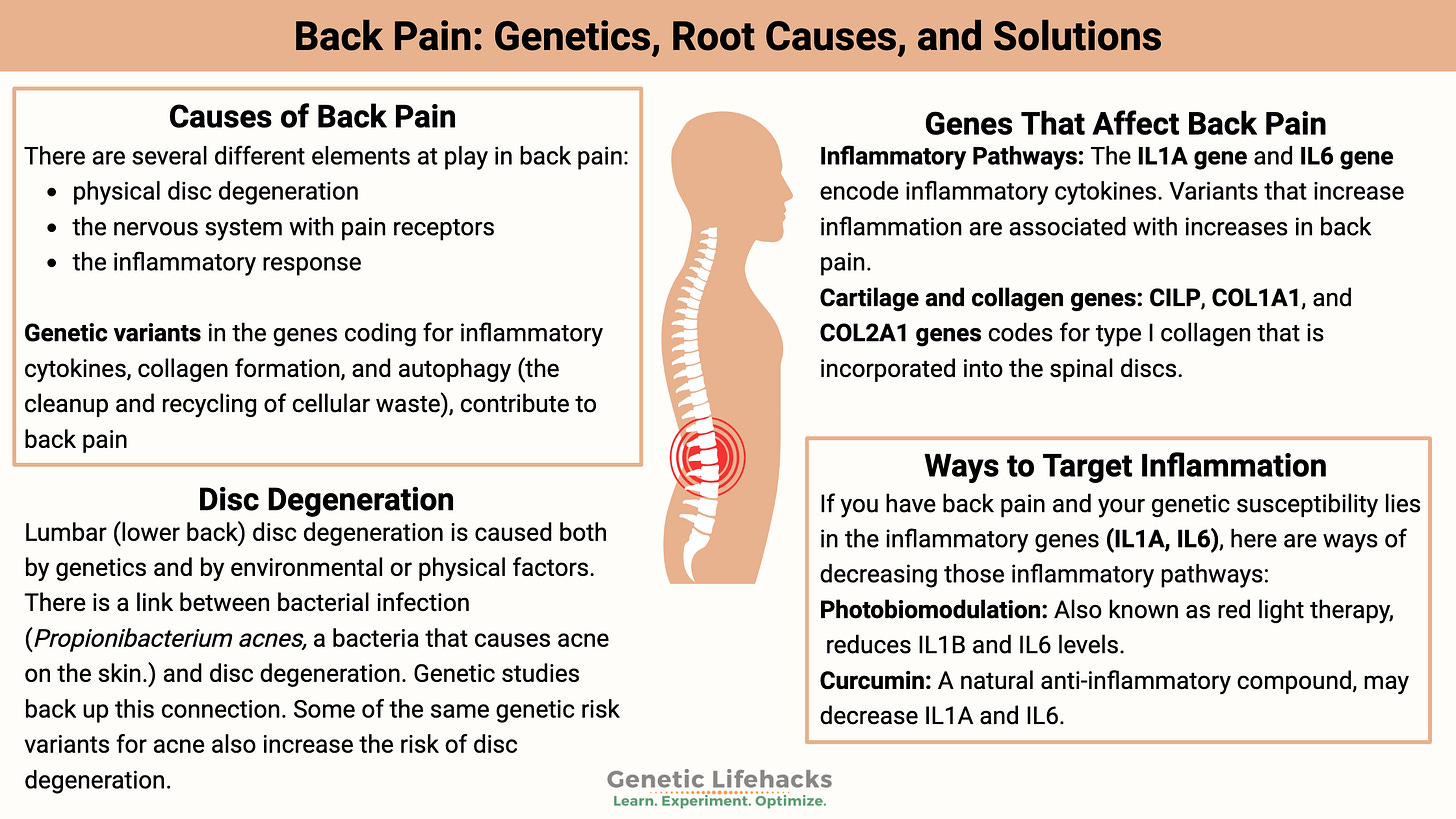I've spent this week updating articles - expanding with new research studies and adding more genetic variants to them.
Three articles (Bisphenols, NLRP3, and Back Pain) are significantly improved and have new variants added. My goal this year is to go back through all of my articles that are several years old and update them with new genetic research studies. So much new research!
I also wanted to make sure that anyone who did whole genome testing with Nebula Genomics was aware of the changes there. If I understand it correctly, Nebula is no longer around and there's a new company called DNAComplete. Nebula is deleting a lot of stored data files next week, so if you have your whole genome data or reports stored there, you need to download it now.
This is a good reminder to everyone to keep your genetic data safely downloaded and stored under your control. I've been reading and writing about genetics for ten years now, and I've seen a lot of companies come and go.
Stay curious,
~ Debbie
BPA and BPS: How Your Genes Influence Bisphenol Detoxification
Key takeaways:
~BPA and its alternatives, BPS and BPF, are pervasive in daily life, found in plastics, food containers, receipts, and even dust.
~ Research shows BPA and similar bisphenols disrupt hormones, increase inflammation, and impact health conditions such as obesity, insulin resistance, and male fertility.
~ Genetic variants influence how well you detoxify BPA, leaving some people more at risk than others.
~ Reduce BPA exposure by avoiding specific sources like plastic containers and thermal receipts, while specific supplements and detox methods like sweating and probiotics may help with excretion.
BPA and BPS: Ubiquitous Exposure to Plastics
Bisphenols are chemicals used to make plastic more flexible. Bisphenol A (BPA), BPS, and BPF act as endocrine disruptors and have been linked in human studies to obesity, insulin resistance, and altered gene expression.
BPA is everywhere in our food supply. In fact, a CDC report showed that 93% of people have BPA in their urine.[ref] This article explains the peer-reviewed research and the links to genetic variants involved in getting rid of BPA.
What is BPA?
Bisphenol-A is a component of some types of plastic.
It is considered to be an endocrine disruptor because of the similarity of the molecules to estrogen.
It is now ubiquitous in the environment, and >90% of people have detectable levels in their blood.
What is BPS? BPF?
With scary headlines about BPA, many companies have opted to make BPA-free plastics using Bisphenol S (BPS) or Bisphenol F (BPF). Some countries have banned BPA in food contact wrappers and baby products, but BPS or other bisphenol alternatives are allowed.
Research now shows that BPS and BPF have hormonal and endocrine-disrupting properties similar to BPA.[ref]
Recent animal studies show that BPS is actually absorbed better and reaches the bloodstream at higher levels than BPA. The oral bioavailability of BPS is about 50% higher than BPA, and it persists for a longer time in the body. Studies on BPF, another bisphenol alternative, show that it alters insulin response and has an obesogenic effect.[ref]
Bisphenol AF (BPAF) is a fluorinated analog of BPA. It is increasingly being used in food wrappers and thermal receipt paper as an alternative to BPA, since it does not have the same endocrine hormone-mimicking effects.[ref] However, BPAF has been shown in studies to cause chromosomal damage.[ref]
Read the rest of the article
NLRP3: Genetics Variants that Increase Chronic Inflammation
Key takeaways:
~ The NLRP3 inflammasome senses pathogens and cell damage and then increases inflammatory response.
~ This inflammasome is like an amplifier that cranks up the inflammatory response.
~ Genetic variants in NLRP3 can cause the over-activation of inflammation for some people, leading to chronic diseases such as RA, heart disease, gout, and more.
What is NLRP3, and how is the inflammatory response system activated?
NRLP3 (NOD-like receptor, pyrin domain-containing 3 ) is a lynchpin for the activation of the inflammasome, which is the part of the immune system responsible for activating the body’s inflammatory response system.
Essentially, NLRP3 is a danger-sensing protein.
Inflammasomes are immune complexes that amplify the immune system response. The NLRP3 inflammasome is activated by:[ref]
Pathogens (e.g., bacterial or viral infection)
DNA replication errors in a cell (e.g., mutation that could cause cancer)
Cellular damage, such as lysosomes breaking open, and mitochondrial dysfunction
Fighting off cancer and destroying bad microbes is really important! The inflammasome calls up the troops, amplifying the immune system response so that it is more powerful and able to overwhelm the pathogens.
~ Balance is key with NLRP3~
Excessive NLRP3 inflammasome activation causes chronic inflammation and increases susceptibility to a whole host of chronic diseases:
IBD
rheumatoid arthritis
cardiovascular disease
Alzheimer’s disease
type 2 diabetes
gout
eye diseases and dry eyes[ref]
What activates NLRP3?
NLRP3 hangs out in the cytosol of cells and is in an inactive form. It is mainly found in macrophages, a type of immune cell. NLRP3 is also found in a few other types of immune cells.[ref]
When activated, NLRP3 binds together to form a big complex with another protein called ASC.
So what activates NLRP3?
The NLRP3 inflammasome recognizes and sounds the alarm for:[ref]
Viruses (e.g., adenovirus, influenza, Sendai virus, coronaviruses)
Specific fungi (e.g., Saccharomyces cerevisiae, Candida albicans)
Bacterial RNA (e.g., Listeria monocytogenes, Escherichia coli, Mycobacterium tuberculosis, and Staphylococcus aureus)[ref]
Certain parasites (e.g., Trichomonas vaginalis)[ref]
Asbestos and Silica[ref]
Damage-associate factors in the body (uric acid crystal, beta-amyloid plaque, extracellular ATP) and ROS (reactive oxygen species)
Activating NLRP3 causes a series of reactions to take place, resulting in increased inflammation.
Read the rest of the article
Back Pain: Genetics, Root Causes, and Solutions
Key takeaways:
~ Back pain isn’t always a mechanical problem or injury. Instead, factors like inflammation, genetic variants, and nerve sensitivity play significant roles.
~ Disc degeneration is common and often painless. Elevated inflammatory cytokines explain why some experience pain while others do not.
~ Genetic variants in inflammatory pathway genes make some people more susceptible to back pain.
~ Sciatica has a strong genetic component, with studies indicating up to 40% heritability.
Read the rest of the article
New on Longevity Lifehacks
Extending lifespan with miRNAs: Exploring a new study in mice that showed that miRNAs can be used to stop cellular senescence and extend lifespan.
What I've been reading:
This is a disturbing study looking at how nanoplastics breach the blood-brain barrier. The researchers used some new imaging techniques to see how the circulating nanoplastics get phagocytosed which leads to obstruction in the tiny blood vessels in the brain.
2) Fish oil reduces aggression
This is a new meta-analysis of 28 different randomized controlled trials on omega-3 supplementation and aggression. The overall effect was a 22% reduction in aggression scores with omega-3 supplementation. The study mentions that higher fish consumption is associated in epidemiological studies with lower homicide rates.
Related Genetic Lifehacks article: Specialized Pro-resolving Mediators (SPMs): The Resolution of Inflammation
2.) A tool to diagnose ASD from dance moves
This article explains a new study and a tool to distinguish autism spectrum disorder based on how children copy the dance moves in a game.








Wow...who would have thought fish oil can have such a profound effect!
Please find details about my therapy for inflammatory diseases here: [Treating Arthritis with Chlorine Dioxide](https://clo2xuewuliu.substack.com/p/treating-arthritis-with-chlorine).